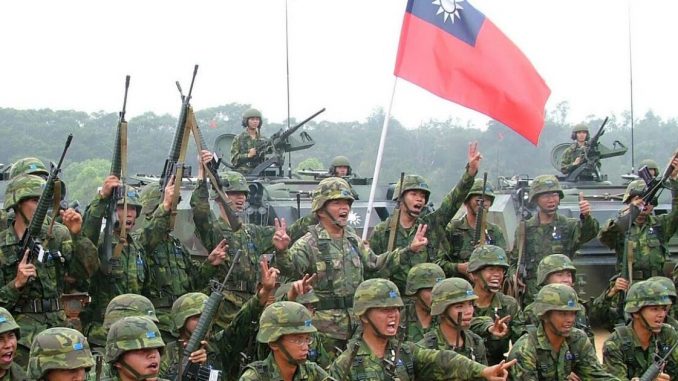
| Published August 8, 2025
War-Gaming the Chinese Blockade of Taiwan: A High-Stakes Gamble for the Indo-Pacific
As tensions simmer across the Taiwan Strait, recent war-gaming exercises have illuminated the fraught realities behind Beijing’s much-discussed option: a naval blockade of Taiwan. Once viewed by some as a “middle ground” coercive tactic short of full-scale invasion, this scenario now emerges from military simulations as an extraordinarily risky and volatile strategy with profound regional and global consequences.
The War Game Scenario: Lights Out in Taiwan
In July 2025, the Center for Strategic and International Studies (CSIS) conducted a comprehensive war game, simulating 26 different blockade scenarios. The results? A Chinese blockade is far from a low-risk, low-cost maneuver. Instead, it carries a high chance of rapid escalation into open conflict, drawing in the United States, Japan, and possibly other regional powers.
Taiwan’s critical vulnerabilities came sharply into focus. The island’s energy supplies—coal, oil, and natural gas—would likely dwindle within weeks, potentially crippling electricity production to just 20% of normal levels. For a global semiconductor manufacturing hub, this would mean a severe disruption not only to Taiwan’s economy but also to worldwide electronics and automotive industries dependent on its chips.
Beyond Taiwan: Regional Ripple Effects
The blockade would also ripple across the broader Indo-Pacific. CSIS’s models indicate conflict could spill into contested waters near Guam and Japan, threatening U.S. bases and allies. Meanwhile, separate exercises hosted by the International Institute for Strategic Studies (IISS) in Singapore revealed that the city-state could play a crucial role as an evacuation and logistics hub, underscoring the strategic importance of smaller regional players in crisis scenarios.
The Stakes and the Costs
For China, the blockade is a perilous gamble. The war games depict scenarios marked by significant casualties, damage to civilian infrastructure, and the risk of drawing global condemnation and military pushback. Far from a contained coercion tactic, the blockade could trigger a far broader, protracted conflict.
For Taiwan and its allies, the findings emphasize the urgency of bolstering energy resilience, securing alternative supply routes, and reinforcing defensive capabilities. For the U.S. and regional partners, it stresses the imperative to prepare for rapid escalation and complex conflict dynamics in an increasingly volatile environment.
A Fragile Balance on the Brink
Ultimately, these war games remind policymakers and analysts alike that the “grey zone” tactics Beijing might employ—like blockades—are fraught with unpredictable and dangerous consequences. The scenario transforms what could seem like a limited pressure tool into a flashpoint capable of reshaping the strategic landscape of the Indo-Pacific.
As tensions persist, the imperative for diplomatic engagement, contingency planning, and regional cooperation has never been clearer. The stakes—regional stability, global supply chains, and international security—could hardly be higher.
 Implications of a Chinese Blockade of Taiwan
Implications of a Chinese Blockade of Taiwan
-
Regional Stability Risks Increase Dramatically
-
What might start as a “limited” blockade could escalate quickly into full-scale conflict involving the U.S., Japan, and other regional allies.
-
The risk of miscalculation or unintended escalation is high, given the complex military and diplomatic dynamics.
-
-
Economic and Supply Chain Disruptions
-
Taiwan is a global hub for semiconductor manufacturing. A blockade or conflict would severely disrupt global supply chains, impacting electronics, automotive industries, and more worldwide.
-
The energy shortages forecast (coal, oil, natural gas) in Taiwan could cripple production and manufacturing, compounding economic consequences.
-
-
Military and Human Cost
-
The blockade is not “low cost” or “low risk” for China. Potentially heavy casualties, damage to civilian infrastructure, and international backlash are likely.
-
Prolonged conflict could devastate the region’s economies and populations.
-
-
U.S. and Allied Military Involvement
-
War games indicate a high likelihood of U.S. intervention, whether direct or indirect, which risks broader regional conflict.
-
Naval and air battles could spread beyond Taiwan to other strategic locations like Guam or Japan.
-
-
Strategic Role of Neighboring Countries
-
Countries like Singapore could become critical evacuation or logistics hubs, influencing diplomatic alignments and regional security frameworks.
-
The blockade scenario underlines the importance of multilateral cooperation and contingency planning.
-
-
Energy and Infrastructure Vulnerability Spotlighted
-
Taiwan’s reliance on imported energy and vulnerable infrastructure means that any blockade could rapidly degrade civilian life and war-fighting capabilities.
-
Urges Taiwan and allies to prioritize energy resilience, alternative supply routes, and infrastructure hardening.
-
-
Geopolitical Messaging
-
China may perceive blockade attempts as a “grey zone” tactic to pressure Taiwan short of full invasion, but the war games show the difficulty of keeping such pressure limited.
-
Demonstrates the complexity for Taiwan and the U.S. in deterring aggression while avoiding unintended war.
-
 Overall Takeaway:
Overall Takeaway:
The war-gaming of a Chinese blockade of Taiwan underscores that such an operation would be far from a clean or contained show of force. While Beijing might see a blockade as a way to coerce Taipei without triggering an outright invasion, the simulations show it carries severe military, economic, and political risks—both for China and the region. Taiwan’s dependence on imported energy, coupled with its critical role in the global semiconductor supply chain, means even a partial blockade could have cascading effects worldwide.
The likelihood of rapid escalation involving the U.S., Japan, and other allies makes a blockade a potential trigger for a broader regional conflict, rather than a limited pressure tactic. Moreover, the scenario highlights the growing strategic importance of regional actors like Singapore in contingency planning. In the end, the blockade option—often viewed as a “middle ground” between peacetime and war—emerges from the simulations as a high-stakes gamble with unpredictable consequences that could reshape the Indo-Pacific security landscape for decades.




